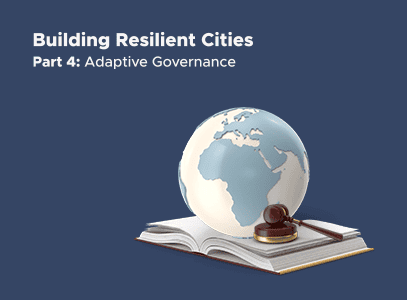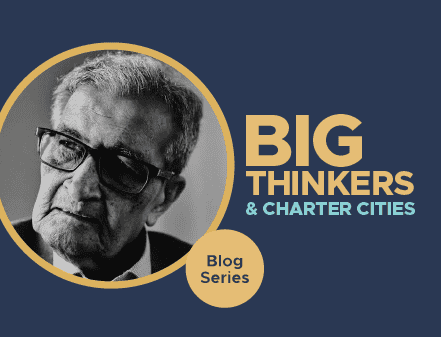Building a Charter Cities Movement
In 1962 Rachel Carson wrote Silent Spring, birthing the modern environmental movement. Within ten years the Environmental Protection Act, the Clean Air Act, and the Clean Water Act were all signed into law.
The environmental movement was fantastically successful at achieving its goals. The idea of environmental protection is baked into both law and culture in almost all high income countries, as well as many low income countries. It is virtually impossible to propose a large scale project today without taking into account environmental concerns.
Environmentalism is hardly the only successful movement in recent history. The civil rights movement reshaped American society, ending apartheid in the South and making overt discrimination culturally unacceptable. Previously the progressive movement reshaped our governing institutions. For an international example, the African independence movement led to the decolonization of Africa in the decades following World War II.
Success of charter cities requires the building of a movement, a group of individuals and organizations with shared values and vision around a set of core ideas. While it is imperative for individual charter city developments to succeed, charter cities operate in a wider context. The government must pass and continue to respect legislation that grants the special jurisdiction. The city must attract funding, business, and residents. Local and international stakeholders must be kept happy.
A movement can be understood as having three core parts: (i) values, (ii) culture, and (iii) action. The values are why the movement exists. The world could be better, the values articulate exactly how the world could be better. The second part of the movement is the culture, defining how participants in the movement act and engage with each other. The last part is the action itself, there must be a larger strategic vision for how to actually engage with the real world to successfully achieve the desired social change.
Values: Shared values are the most important component of a movement. The charter cities movement values human flourishing, defined as improving living standards and the respect for the dignity inherent in every person. While the charter cities movement is hardly unique in these values, it is important to continuously reference them to ensure our ideas are on a solid foundation.
Culture: It is one thing to define values, it is another to instantiate them. Culture is a set of norms and mores which participants in the movement follow. For the charter cities movement this includes things like intellectual curiosity, openness, entrepreneurial spirit, get shit done attitude, long term focus, tolerance, generosity, and a relentless focus on outcomes. The culture defines how the practiced within the network that is the movement.
Action: The last part of a movement is action, a larger strategic vision for how individuals and organizations can get involved. Action can take a number of different forms within the charter cities movement, including entrepreneurship, building a city, discussing charter cities with your friends or on social media, volunteering your time, or donating to affiliated nonprofits. This larger strategic vision allows the movement to grow and expand over time, welcoming new participants.
Building a movement lowers transaction costs. Meeting someone in the movement allows you to focus on execution, as you know you share a vision, culture, and broad strategic alignment. This allows for more effective coordinated action than otherwise possible.
In five years the goal is for the movement to be close to mature, this means that individuals supporting charter cities will hold key positions in the international development cmmunity. They might be advisors to presidents or cabinet members who support charter city legislation. Or they might be working for the World Bank or UN and direct funding or research to focus on charter cities. Building a movement means placing sympathetic people in positions of power or making the ideas compelling enough to convince those already in those positions to help charter cities.
The shorter term goal is to continue to build momentum. People like winning. Paul Romer achieved public attention that has yet to be replicated for charter cities, however, after his lack of success in Madagascar and Honduras, all the interested parties more or less forgot about his ideas. A similar setback today could put the movement back years.
Momentum for charter cities is a series of small wins. This means things like Prospera launching or more recently Ciudad Morazan. It means successful funding rounds for charter city developers. It means new books, articles, podcasts, or blogs being published about charter cities. It means charter city supporters getting in positions of influence, e.g. a grant writing organization or a research organization.
A successful movement starts a virtuous cycle. As the wins pile up more resources and more talent are attracted to the movement. The additional resources and talent ensure the wins continue to scale, attracting more resources and talent, until there are dozens of charter cities.
Commentary
Tony Blair Institute has a very good article on Ethiopia’s industrialization. They focus on how long time horizons, effective coordination, and good execution have led to success. Lots of lessons for charter cities.
Akon City is moving forward. The first stone has been laid for the 2000 acre city, located 62 miles from Dakar, the capital of Senegal. I wish them the best, though I remain a bit skeptical.
A fascinating colorized 1902 video of the Wuppertal Suspended Railway in Germany. The level of infrastructure compares favorably to some mega cities in the Global South today.
A very interesting history of Irvine California, including their decision to keep ownership of all 93,000 acres. An oral history of Irvine by Raymond Watson, the architect and later Company President. Ht Garret Jones.
A fun city building game designed to teach you how to structure city finances without large up front capital expenditures.
What I’m reading
I’ve been reading the Grant biography by Ron Chernow. It’s fascinating. Grant failed often throughout life, because of his alcoholism and his guileless nature that business partners often exploited. However, during the Civil War he came alive with incredible focus, becoming instrumental to the war effort after numerous failed Northern generals. What I find particularly interesting is the dynamic between Lincoln, Grant, and the other generals. Managing the war effort, a re-election campaign, and general politics seems like a hugely complicated task. Reading the details of the 1864 war time election was fun.







